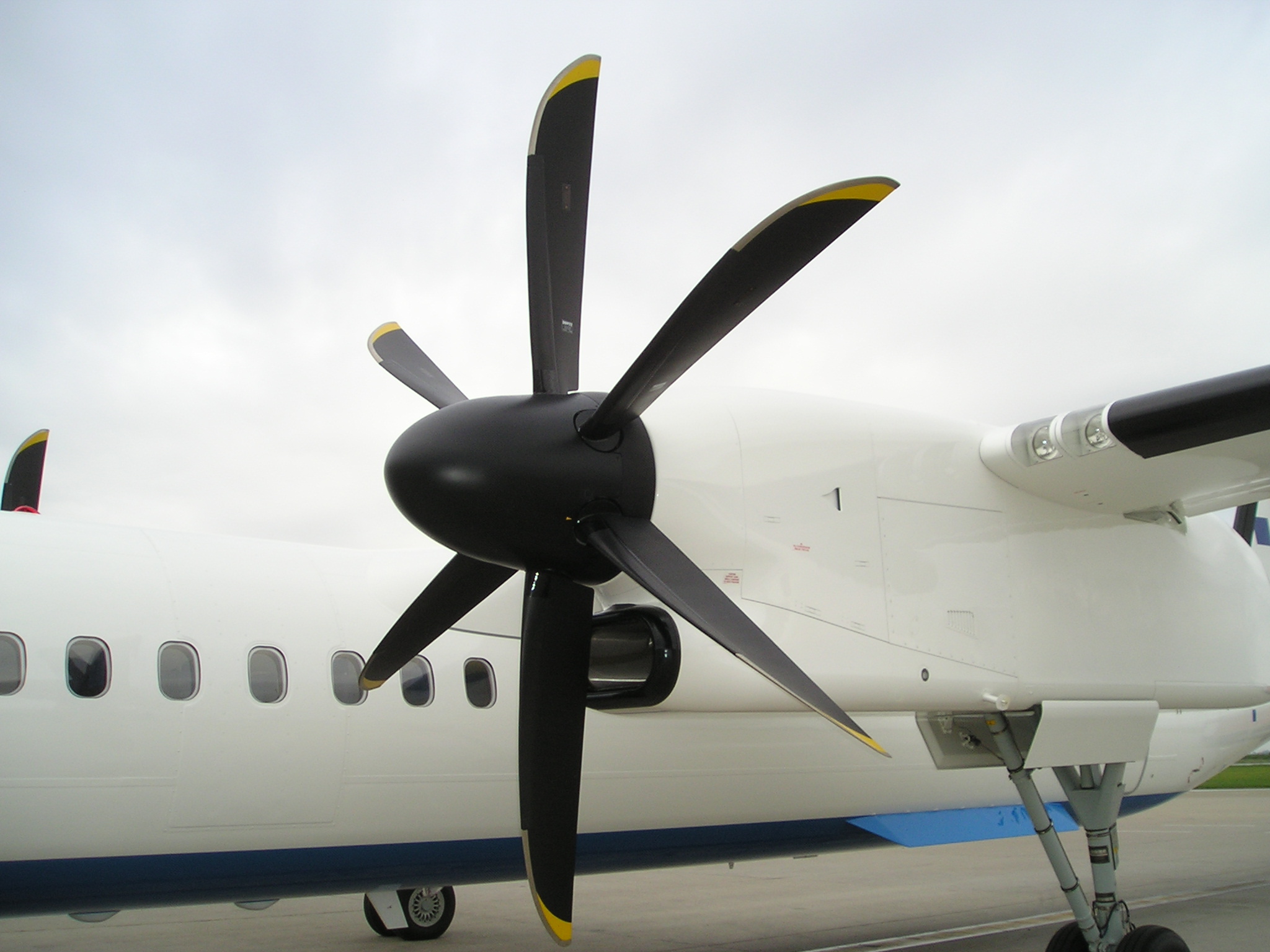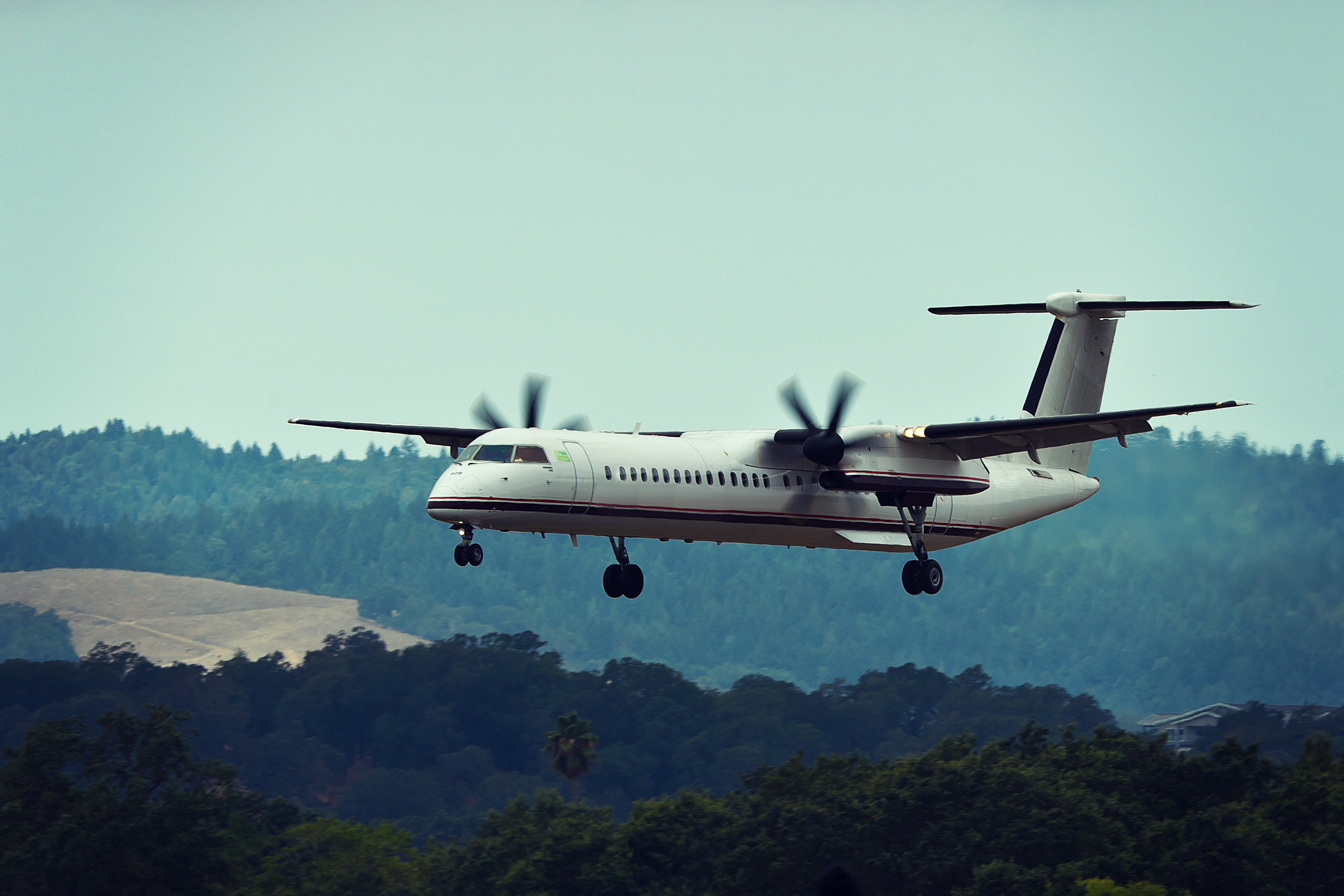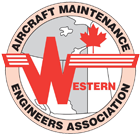WinAir Presents: The Complete Guide to the Bombardier Dash 8 Aircraft—infographic showcases key information on the Dash 8 series of aircraft, which is now owned by Viking Air (Longview Aviation Capital)
(Photo Credit: Anatoliy Lukich / Shutterstock.com – edited)
The Complete Guide to the Bombardier Dash 8 Aircraft was created using information sourced from Wikipedia’s “Bombardier Dash 8” article and Bombardier’s “Q Series” brochure. It highlights the aircraft’s vital statistics, specifications, and available variants.
The Bombardier Dash 8 (DHC-8) aircraft is a series of turboprop-powered regional airliners that were originally manufactured by de Havilland Canada. The aircraft, which was developed from the Dash 7, boasts improved cruise performance, lower operational costs, and is less expensive to maintain than its predecessor. It combines common turboprop attributes with jet-like features. While it does not have the same level of STOL performance as the Dash 7, the Dash 8 is larger, faster, extremely versatile, and even more robust; it can operate from small airports, utilize unpaved runways, and is capable of carrying between 82 and 90 passengers. This makes the Dash 8 an ideal aircraft for short-haul regional airlines.
This aircraft series achieved first flight on June 20, 1983, with the Dash 8 Series 100. It was introduced into service the following year on October 23, 1984, by NorOntario, the first airline to order and take delivery of the aircraft. The program gained popularity throughout the mid-1980s and was bought by Boeing in 1988. It was later sold to Bombardier in 1992 and then resold to Viking Air parent company, Longview Aviation Capital, in early 2019.
For quick reference, a summary of all infographic information is located below the image.
(Click on the image to zoom into the material)
The Complete Guide to the Bombardier Dash 8 Aircraft
Introducing the Bombardier Dash 8 Aircraft
The program was bought by Boeing in 1988, sold to Bombardier in 1992, and then resold to Viking Air parent company, Longview Aviation Capital, in early 2019.[3]
The aircraft was developed from the Dash 7 with improved cruise performance, lowered operational costs, but without STOL performance.[4]
Vital Statistics[6]
- Role: Turboprop Airliner
- Manufacturer: de Havilland Canada; Bombardier Aerospace
- First Flight: June 20, 1983
- Introduction: 1984 with NorOntair
- Status: In production
- Produced: 1983–present
- Number Built: 1,249 (as of June 30, 2018)
- Unit Cost: Q200 – US $12 million (2000); Q300 – US $14.3 million (2000); Q400 – US $32.2 million (2017)
- Developed From: de Havilland Canada Dash 7
Specifications – Q200[8]
- Cockpit Crew: 2
- Cabin Crew: 1
- Passengers, Typical: 37
- Max Capacity: 40
- Length: 73 ft / 22.25 m
- Height: 24 ft 7 in / 7.49 m
- Wingspan: 90 ft / 27.40 m
- Wing Area: 585 ft² / 54.40 m²
- Aspect Ratio: 13.8/li>
- Width: Fuselage 8 ft 10 in / 2.69 m, cabin 8 ft 3 in / 2.52 m
- Cabin Length: 30 ft 1 in / 9.16 m
- Max Takeoff: 36,300 lb / 16,466 kg
- Operating Empty: 23,098 lb / 10,477 kg
- Max Payload: 8,921 lb / 4,647 kg
- Max Fuel: 835 U.S. gal / 3,160 L
- Engines: 2 × PW123C/D
- Unit Power: 2,150 hp (1,600 kW)
- High Speed Cruise: 289 kn / 535 km/h
- Ceiling: 25,000 ft / 7,620 m2
- Range: 1,125 nmi / 2,084 km
- Takeoff (MTOW, SL, ISA): 3,280 ft / 1,000 m
- Landing (MLW, SL): 2,560 ft / 780 m
Specifications – Q300[8]
- Cockpit Crew: 2
- Cabin Crew: 1-2
- Passengers, Typical: 50@30–33″
- Max Capacity: 56
- Length: 84 ft 3 in / 25.70 m
- Height: 24 ft 7 in / 7.49 m
- Wingspan: 90 ft / 27.40 m
- Wing Area: 605 ft² / 56.20 m²
- Aspect Ratio: 13.36
- Width: Fuselage 8 ft 10 in / 2.69 m, cabin 8 ft 3 in / 2.52 m
- Cabin Length: 41 ft 6 in / 12.60 m
- Max Takeoff: 43,000 lb / 19,505 kg
- Operating Empty: 26,000 lb / 11,793 kg
- Max Payload: 13,500 lb / 6,124 kg
- Max Fuel: 835 U.S. gal / 3,160 L
- Engines: 2 × PW123/B/E
- Unit Power: 2,380–2,500 hp (1,770–1,860 kW)
- High Speed Cruise: 287 kn / 532 km/h
- Ceiling: 25,000 ft / 7,620 m2
- Range: 924 nmi / 1,711 km
- Takeoff (MTOW, SL, ISA): 3,870 ft / 1,180 m
- Landing (MLW, SL): 3,415 ft / 1,040 m
Specifications – Q400[8]
- Cockpit Crew: 2
- Cabin Crew: 2-3
- Passengers, Typical: 82@30″
- Max Capacity: 90@28″
- Length: 107 ft 9 in / 32.8 m
- Height: 27 ft 5 in / 8.4 m
- Wingspan: 93 ft 3 in / 28.4 m
- Wing Area: 689 ft² / 64 m²
- Aspect Ratio: 12.6
- Width: Fuselage 8 ft 10 in / 2.69 m, cabin 8 ft 3 in / 2.52 m
- Cabin Length: 61 ft 8 in / 18.80 m
- Max Takeoff: 67,200 lb / 30,481 kg
- Operating Empty: 39284 lb / 17819 kg
- Max Payload: 18,716 lb / 8,489 kg
- Max Fuel: 1,724 U.S. gal / 6,526 L
- Engines: 2 × PW150
- Unit Power: 5,071 hp / 3,781 kW
- High Speed Cruise: 300–360 kn / 556–667 km/h
- Ceiling: 27,000 ft / 8229 m
- Range: 1,100 nmi / 2,040 km
- Takeoff (MTOW, SL, ISA): 4,675 ft / 1,425 m
- Landing (MLW, SL): 4,230 ft / 1,289 m
Variants[11]
Series 100
The Series 100 entered into service in 1984 and was the original 37- to 39-passenger version of the Dash 8. Of all Dash-8s, this series has the shortest fuselage.
The original engine was the Pratt & Whitney Canada PW120—later units used the PW121. Rated engine power is 1,800 shp (1,340 kW).
- DHC-8-101
- DHC-8-102
- DHC-8-103
- DHC-8-102A
- DHC-8-106
- DHC-8-100PF
- DHC-8M-100
- CC-142
- CT-142
Series 200
The Series 200 maintains the same 37–39 passenger airframe as the Series 100. It uses the more powerful Pratt & Whitney Canada PW123 engines rated at 2,150 shp (1,600 kW).
- DHC-8-201
- DHC-8-202
- Q200
Series 300
The Series 300 can accommodate 50–56 passengers. It introduces a longer airframe that stretches 3.45 meters (11 ft 3.2 in) beyond the Series 100/200.
Similar to the Series 200, it uses the Pratt & Whitney Canada PW123 engine. Rated engine power is between 2,380 shp (1,774 kW) and 2,500 shp (1,864 kW).
- DHC-8-301
- DHC-8-311
- DHC-8-314
- DHC-8-315
- DHC-8-300A
- Q300
- DHC-8-300 MSA
- RO-6A
Series 400
The Series 400 can seat 68–90 passengers and has a larger, stouter T-tail. It introduces an even longer airframe that stretches 7.2 meters (23 ft 6 in) over the Series 300.
This series uses Pratt & Whitney Canada PW150A engines rated at 4,850 shp (3,620 kW) and has a cruise speed of 360 knots (667 km/h), which is 60–90 knots (111–166 km/h) higher than its predecessors.
- DHC-8-400
- DHC-8-401
- DHC-8-402
- Q400
- Q400NextGen
- Q400-MR
- DHC-8 MPA-D8
- DHC-8-402PF
- Q400CC
Streamline and Expedite Maintenance Tasks on Aircraft like the Bombardier Dash 8 with WinAir Version 7

Overseeing the maintenance activities on an aircraft fleet can be a challenge when you lack the appropriate tools to streamline and expedite tasks. With WinAir Version 7, you can do all of this and more. The software is capable of handling nearly any aircraft type, including the Bombardier Dash 8. At present, WinAir has numerous clients worldwide who operate with this aircraft in their fleet. For each of these operations, WinAir is regarded as a fundamental and indispensable tool for maintenance management and for ensuring inventory control.
In addition to its industry-acclaimed aviation management software, WinAir offers a variety of additional services to ease the transition to the software, shorten the implementation timeline, and to assist aviation operations in reaching their particular goals. These services consist of a process consultation, project management, data migration, training, hosting, integrations, client success, and aircraft template building. In terms of its aircraft template building service, WinAir’s Aircraft Services department has built aircraft templates for the Dash 8 and an array of other fixed-wing and rotary-wing aircraft types. This department has the skills and direct aviation industry experience to translate specific manufacturer maintenance requirements into accurate electronic templates.
“The Dash 8 is a fantastic short-haul aircraft that is well-known for its high performance, safety, and versatility,” says WinAir Aircraft Services Representative, Todd Raycraft. “This aircraft has excellent speed and relatively low maintenance costs. I enjoyed working on the Dash 8 aircraft template and look forward to meeting with operators of this aircraft to learn more about how they can benefit from our software and aircraft services.”
With WinAir Version 7 and WinAir’s available services, aviation operations from around the globe are benefitting from improved operational efficiency, enhanced processes, and having access to data that they can trust. The software has proved to be instrumental in assisting operations in taking control of their business. Not only that, but it has increased productivity, harmonized departments, and improved overall workflows. When the software is combined with WinAir’s available services, businesses can anticipate significant time-savings.
In terms of WinAir’s aircraft template building service, this service has helped operations tremendously. It has provided them with precise data that they can rely on and has saved them valuable time that they have been able to redirect towards their daily business activities. Operations that have used this service have lauded WinAir for the accuracy and trustworthiness of these aircraft templates built by their Aircraft Services department. So no matter the aircraft that you command in your fleet, with WinAir Version 7 and our Aircraft Services team, we have got you covered.
Interested in improving business processes at your aviation operation? If so, then contact us now to chat with a member of the WinAir team about booking an online demonstration of WinAir Version 7 that is tailored to your specific requirements!
About WinAir:
Based in London, Ontario, Canada, WinAir has over 30 years of experience as a leader in aviation management software. Companies rely on WinAir to efficiently and effectively track and manage aircraft maintenance and inventory control. WinAir is proud to lay claim to hundreds of installations at aviation-specific organizations worldwide. From airlines to heli-ops, law enforcement agencies, oil industry suppliers, MROs, CAMOs, medical evacuation response teams and more, businesses using WinAir regard the solution as a necessary component to the successful management of their fleet maintenance programs.






